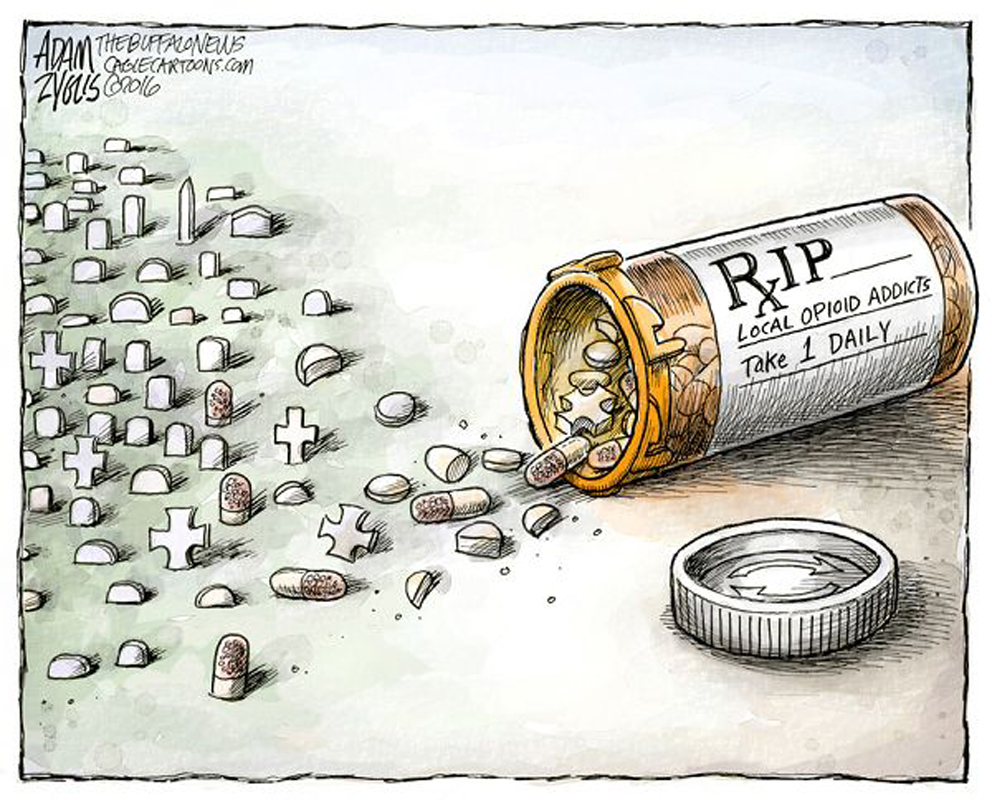The stigma attached to opioids has changed the way physicians administer prescription-painkillers, leading to under-treated pain and unnecessary suffering. When applied in controlled conditions with guidance from trained medical personnel, patients take opioids for pain management. Opioids act on opioid receptors in the brain related to pain and emotion. Opioids can also act as agonists (activate receptors), partial agonists (activate receptors with a lesser response), or antagonists (block receptors). There are a variety of drugs doctors prescribe for pain management, which includes morphine (Kadian®, Avinza®), hydrocodone (Vicodin®), oxycodone (OxyContin®, Percocet®), codeine, and fentanyl.
Fentanyl is a very potent, synthetic, mu-opioid agonist and is considered 50 to 100 times more potent than morphine, a classic plant-derived mu-opioid agonist and analgesic (pain reliever). Fentanyl has two primary uses, which include treating intense chronic pain, such as cancer pain, and aiding in anesthesia in certain types of surgery. Unfortunately, these drugs also produce euphoria and are highly addictive, which leads to fentanyl being illegally made and commonly misused. In recent years, the amount of opioid-related deaths involving fentanyl (Actiq®, Duragesic®, Sublimaze®) increased from 14.3% in 2010 to 59% in 2017.
Image Source: Karl Tapales
Fentanyl is extremely inexpensive and easy to produce in comparison to heroin. This results in it often being added to or laced in other drugs, such as cocaine, MDMA, heroin, methamphetamine, and counterfeit pills, which can result in the user being unaware of the presence of fentanyl. This allows suppliers to provide a much cheaper yet stronger product that is far more dangerous to the public because this practice is more likely to lead to overdose. Fentanyl is challenging to work with because of its potency. Suppliers are working with microgram amounts of the drug, and even a small error in the quantity weighed out can lead to serious adverse effects in the form of impaired breathing, coma, permanent brain damage, and even death. This is a result of a reduction in neuronal activity through opioid receptors within areas of the brain involved in breathing.
In the event of an overdose from opioids, there are immediate actions that people should take, which include calling 911 and immediately administering naloxone (NARCAN®, EVZIO®) if available. Naloxone works as an antagonist by rapidly binding to opioid receptors and blocking other opioids from binding. In the case of fentanyl, multiple doses of naloxone over some time may be required to make sure breathing has not slowed or stopped. Some states do allow the purchase of naloxone without a prescription if a potential overdose might occur.
There are treatments available for those suffering from opioid addiction and dependence, which include a combination of medication and behavioral therapy. Discussing treatment options with a health provider is recommended, as well as more public awareness on fentanyl and other opioids.
Featured Image Source: Adam Zyglis










